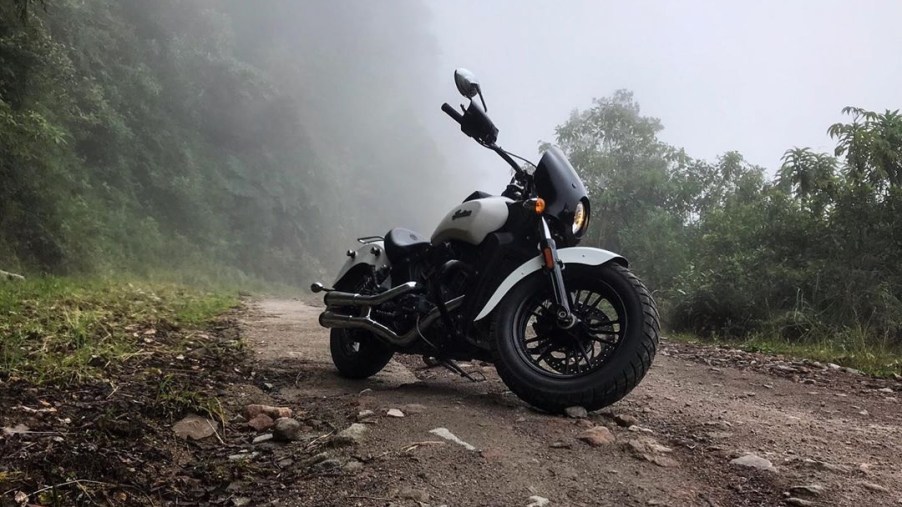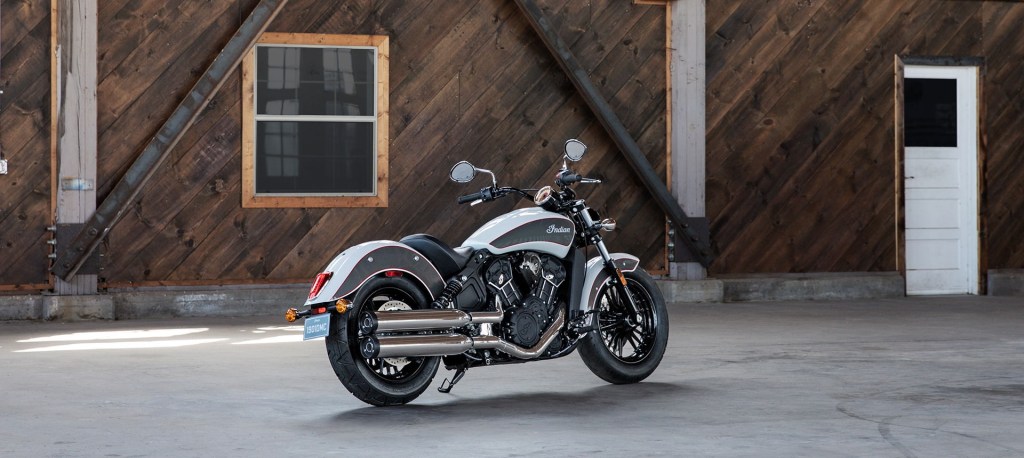
An Indian Scout Sixty Can Tackle Jungles and Mountains
Cruisers aren’t generally built for off-roading. For that, riders usually turn to dual sports or adventure-touring bikes, which have skid plates, chunky tires, and more suspension travel. But, just because the Porsche 911, Mazda Miata, and Vespa scooter weren’t designed for off-roading, doesn’t mean people haven’t modified them for it. The same thing goes for cruisers, like the Indian Scout Sixty ridden by biologist and wildlife protector Janelle Kaz.
The Indian Scout Sixty’s technical details

When Indian was revived in 2011, one of the first bikes to return was the Scout entry-level cruiser. But, at roughly $11.5k, it was somewhat pricy. That’s why Indian then released the Scout Sixty, which starts at just below $9k.
Mechanically, Cycle World explains, the Sixty shares a lot with the full-size Scout. They have the same frame, wheels, brakes, and so on. The biggest differences are the engine and transmission. The Scout Sixty has a 78-hp 1.0-liter V-twin, while the Scout has a 100-hp 1.1-liter V-twin. But actually, it’s basically the same V-twin. The Sixty’s just had its cylinders modified and ECU retuned.
It’s much the same story with the transmission. To make the Sixty’s 5-speed, Indian’s engineers removed the Scout’s 5th gear from its 6-speed. That means, Jalopnik reports, the Indian Scout Sixty can cruise at low rpm on the highway, and still pull strongly at low speeds.
And that’s something you need in the jungles of South America.
Biologist Janelle Kaz and her Indian Scout Sixty
Janelle Kaz’s job “is to document wildlife and ecosystem protection,” she told The Biologist in an interview. She travels across South America, monitoring the status of endangered species like the Andean condor, marine otter, and Andean cat. Along the way, she works with and educates locals on how to properly conserve the wildlife habitats around them.
For Janelle, a motorcycle was the best way of getting around to reach remote areas. She’s actually been doing this for 5 years, across various continents. And she notes that “being a woman alone on a motorcycle seems to be a compelling way to talk about conservation to those who otherwise might not listen.” And although Motorcyclist reports she previously used a Royal Enfield Himalayan adventure bike, her current mode of transport is a modified Indian Scout Sixty.
To increase the Scout Sixty’s ground clearance and suspension travel, Kaz fitted Progressive 970 shocks provided by Roland Sands Designs, Motorcyclist reports. To improve the riding position for off-road-riding, Kaz also installed RSD mid-controls, risers, and a gauge relocator. However, she does report the bike’s low center-of-gravity and seat make it “very manageable” for someone of her 5’6” height.
To guard against the drivers which often zoom by on narrow roads, the Indian Scout Sixty also got protection bars. And for added off-road protection, Kaz fitted an RSD pulley guard, as well as Memphis Shades hand guards and windscreen. The tires, though, are stock and offer excellent traction on dirt and wet roads.
How the bike handles South America
So far, Janelle has ridden her Scout Sixty through Chile, over the Andes and through the empty wastes of the Atacama Desert. Her travels took her next to Peru, the Amazon jungle, and Ecuador. And through landslides, altitude sickness, and the random dog, the bike’s been a solid companion.
The only time the bike truly felt out of place was on a particularly ruined road in Peru. And the only mechanical issue Janelle experienced, according to one Instagram reply, was a rear brake master cylinder failure. She commented that it was likely due to saltwater proximity during her time in Ecuador.
As it turns out, then, the Indian Scout Sixty can cruise through more than just the asphalt jungle.
Follow more updates from MotorBiscuit on our Facebook page.


